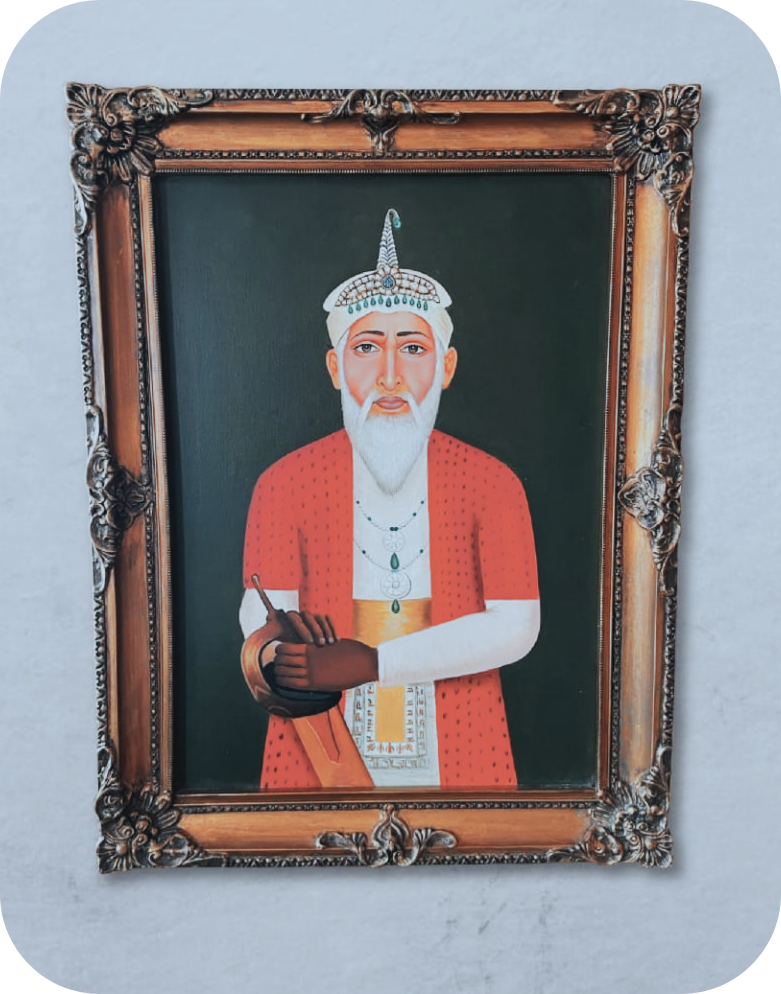Opulence In Turban Ornaments
Turban ornaments in Indian royalty were far more than just decorative jewels. They were potent symbols of power, legitimacy, cultural identity, and dynastic pride. no effort was spared in crafting the opulent and lavish turban ornaments worn by Indian royalty. These were not just adornments but meticulously designed masterpieces, representing the pinnacle of artistry, gemology, and regal identity. Emeralds from Colombia, Burmese rubies, Basra pearls, and natural spinels were commonly used. The most sought after gems from the most famed sources, that was the hallmark of most turban ornaments worn by Indian royals.
ASAF JAH 1 - THE FIRST NIZAM OF HYDERABAD

Ornaments like the sarpech, jigha, and kalgi were worn exclusively by royalty or nobles of high rank. Their presence signified rulership and authority, often worn during court assemblies, processions, and coronations. n some princely states, only the ruler or heir apparent had the right to wear specific turban ornaments — reinforcing their exclusive status. It was not uncommon for turban ornaments to be reserved only for royals in Asia. This often meant that common people, could not wear an ornament in their turban even if, they could afford it.
Turban ornaments were used as gifts (nazrana) in political alliances, marriages, or treaties. A ruler presenting a jewel-encrusted turban ornament to another was offering respect, allegiance, or recognition. The British colonial administrators continued this practice by gifting or receiving such ornaments to affirm loyalty from princely states. Some reports suggest that the Nizams of Hyderabad, considered to some of the most wealthy royals in their time (1724 - 1948), used turban ornaments, diamonds and other precious jewelry as a mode of payment.
Talking about the Nizams it is said that Asaf Jah 1 the first Nizam of Hyderabad, owned to valuable diamond turban ornaments. At a time when most royal turban ornaments were designed to have a precious gemstone (ruby, sapphire, emerald) in the center, these two turban ornaments worn by Asaf Jah 1 had fancy color diamonds in the center.
Royal turban ornaments were custom-made for each ruler and tailored to reflect their dynastic motifs, personal symbolism, or courtly tastes. Royal courts in Jaipur, Hyderabad, Lahore, and Baroda had dedicated ateliers (karkhanas) for jewelers, enamelists, and goldsmiths. European-trained artisans were also employed in later centuries to blend Indo-European styles during colonial rule.
Specific turban styles and ornaments helped distinguish the dynastic identity. The Nizams of Hyderabad had distinct sarpechs, often vertical and elaborate. Diamonds were often used as accent stones to add an element of glitter, to turban ornaments worn by the Nizams. The Sikh Maharajas, such as Ranjit Singh, favored kalgis with bird feathers and symbolic gemstones. Rajput rulers preferred multi-tiered sarpechs in the shape of half-moons or fans, reflecting solar or lunar lineage.
This quote says it all - “To create a royal turban ornament in India was to blend power with poetry — where every diamond was a declaration, every gem a legacy.”
